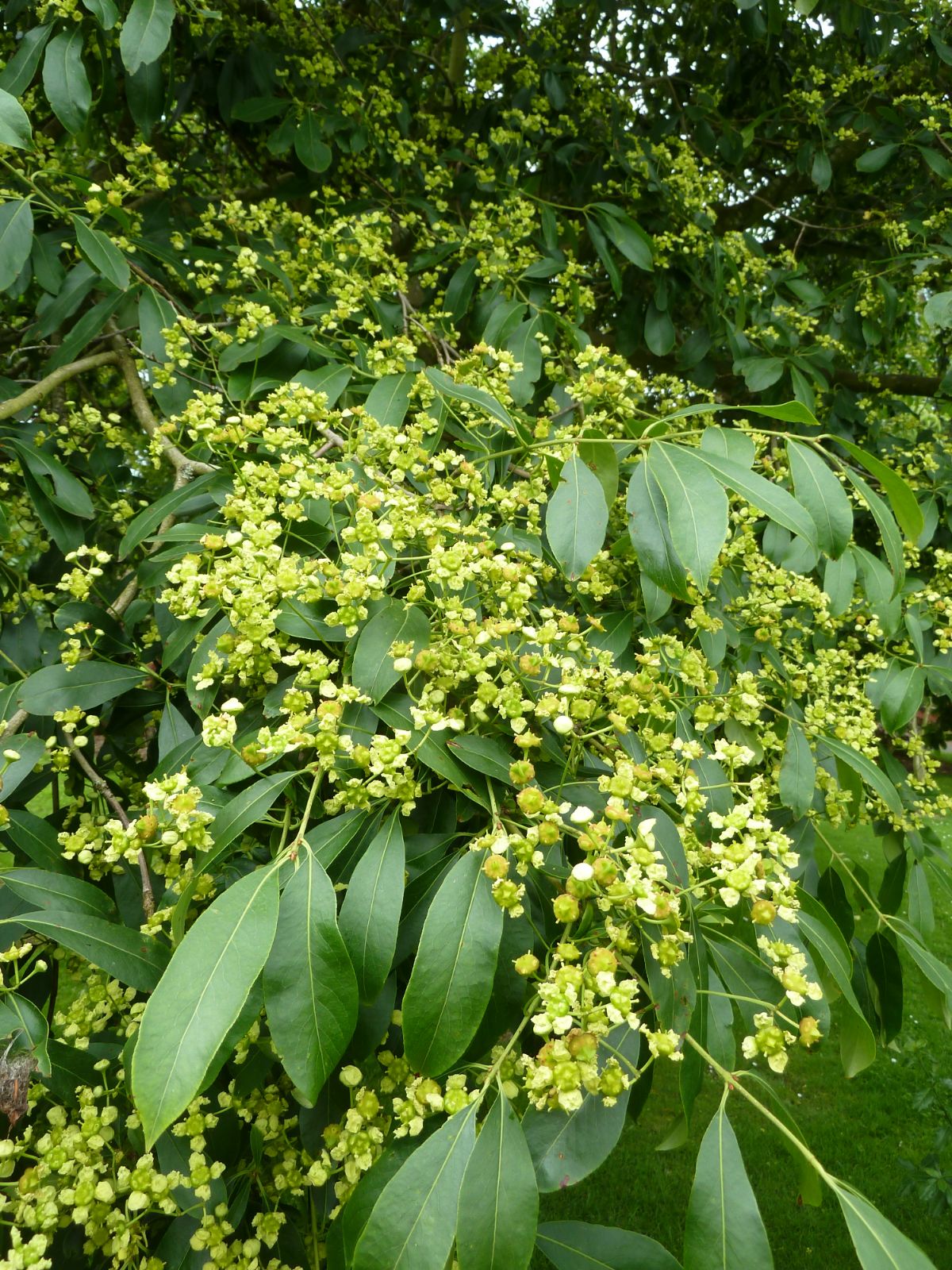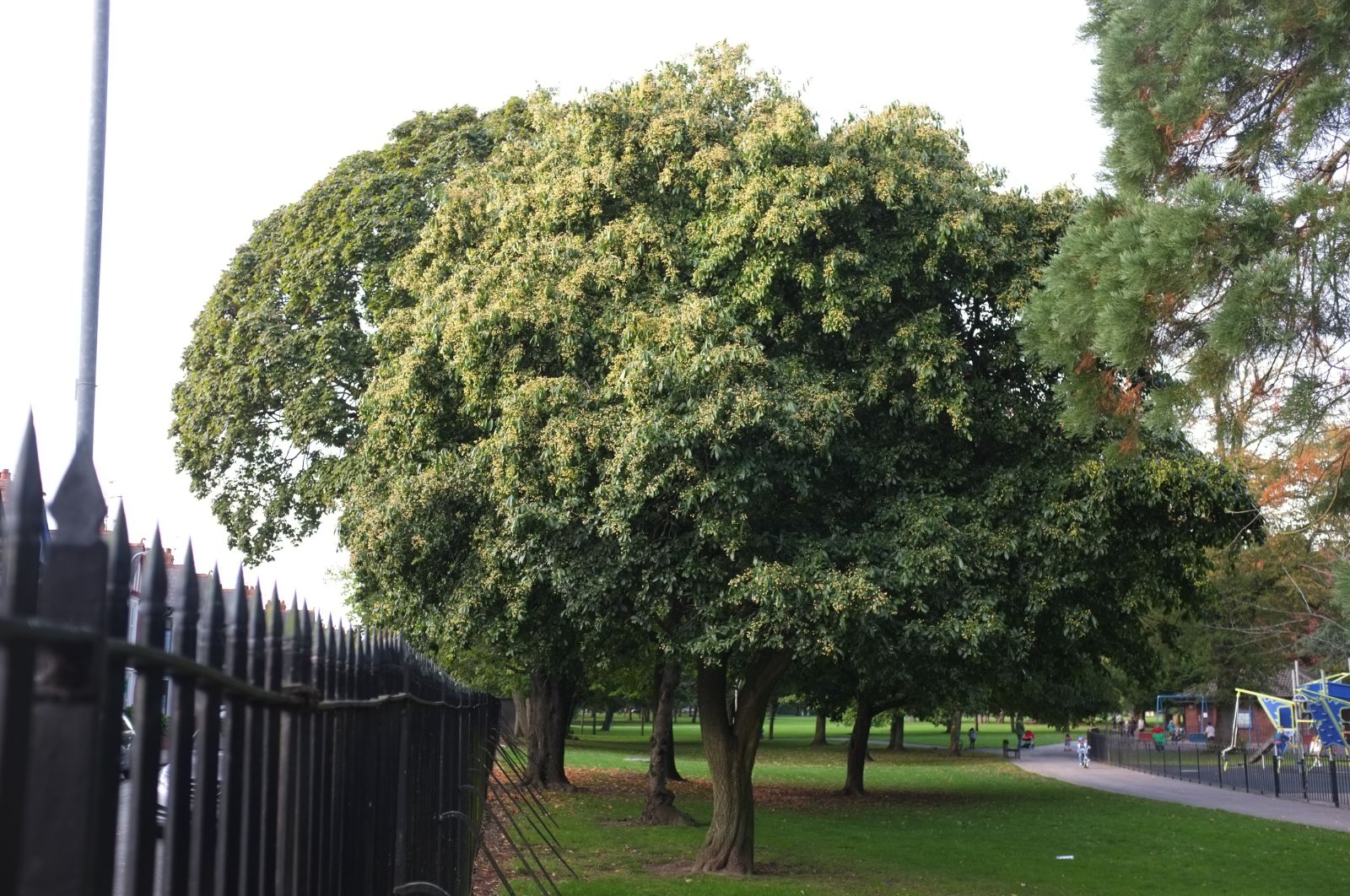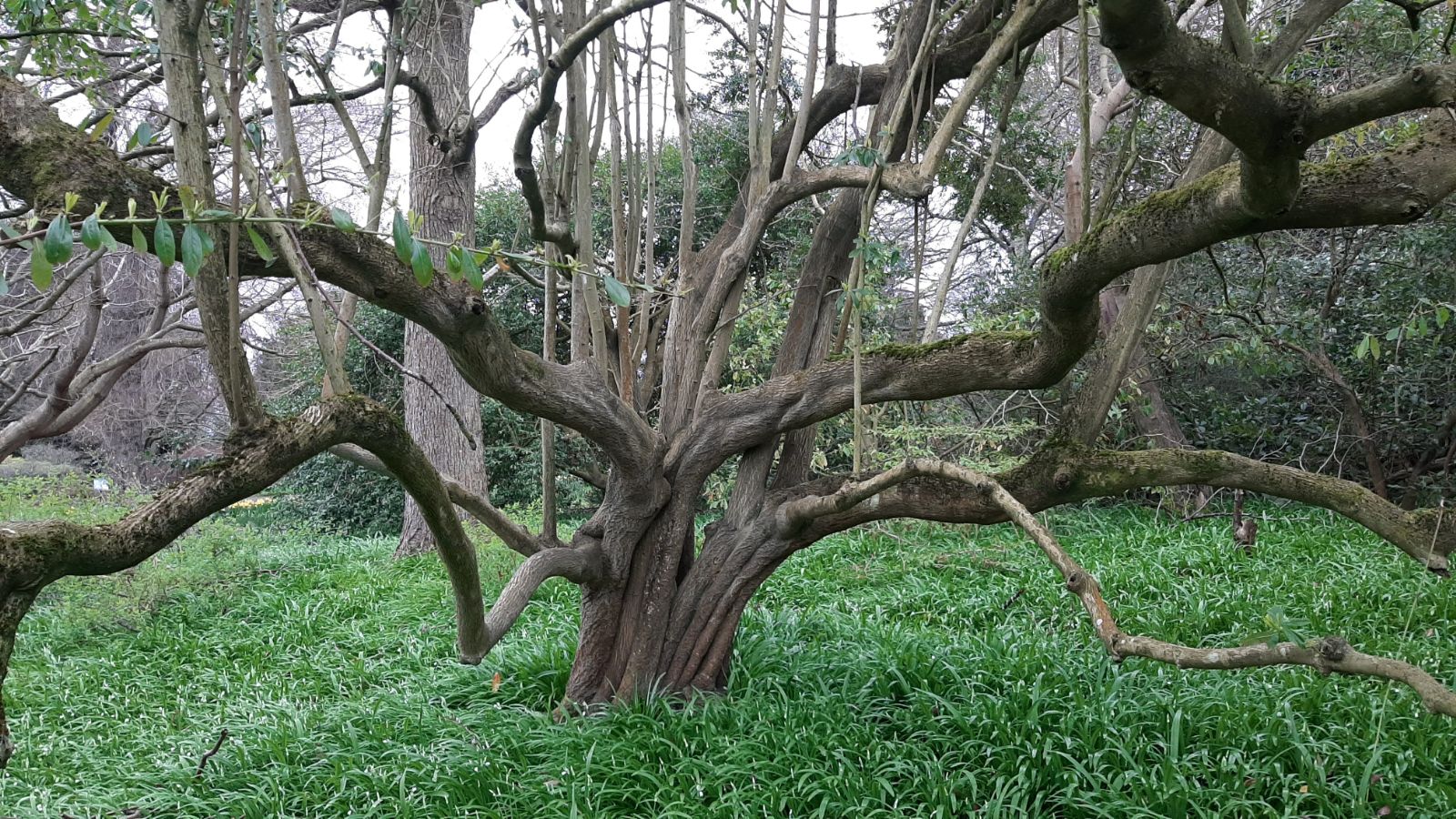This species is represented in cultivation by the following form, which seems to differ from the type only in its narrower leaves:
f. salicifolius Stapf & F. Ballard
A semi-evergreen tree 25 ft or more high, or a shrub; young shoots slender, glabrous, slightly ribbed. Leaves lanceolate to narrrowly oval, slender-pointed, wedge-shaped at the base, finely toothed; 2 to 4{1/2} in. long, {5/8} to 1{1/4} in. wide, dark bright green, glabrous on both sides; stalk {1/2} in. or less long. Flowers greenish or yellowish white, three to nine on a cymose inflorescence, the main-stalk of which is 1 to 2 in. long; the individual flower 1 in. wide on a stalk {1/3} to {1/2} in. long. Petals four, wrinkled, roundish, {1/8} in. wide; calyx-lobes shallow, reflexed (especially on the fruit); disk large. Fruit four-lobed, {5/8} in. wide, four-ribbed, palepink; seeds black.
Bot. Mag.,t. 9183.Native of N. India (Nepal, Khasia, Bhutan) and of W. China. It was cultivated at Kew in 1867 but was afterwards apparently lost to cultivation until reintroduced from Bhutan by Cooper about 1914, under his number 3562. Plants raised from his seed succeeded very well with the late Sir Chas. Cave at Sidbury Manor, Sidmouth, from whom I had handsome fruit-bearing branches in November 1925. Plants of the same origin have proved quite hardy at Kew and Glasnevin, very healthy, of spreading habit and free growth. It also grows well on chalk at Highdown in Sussex, where two plants have made a clump 20 ft across. It was given an Award of Merit when shown from there in 1953. Plants have also been raised from seeds collected by Forrest in Yunnan in 1922, and from seeds sent home by his collectors in 1933, also from Yunnan.Judging by specimens in Kew Herbarium from both India and China,
E. grandiflorus is variable in leaf, the majority having obovate leaves much shorter and broader than in Cooper’s plant and with rounded ends; the fruits, however, seem to be fairly uniform in size and shape.The broad-leaved, more typical form of the species grows at Wakehurst Place in Sussex. This has the leaves up to 4{3/4} in. long, 2{1/2} in. wide (narrower on the spurs). They are noticeably thicker and glossier than in the narrow-leaved form growing nearby, and turn purple or bronze in the autumn.



